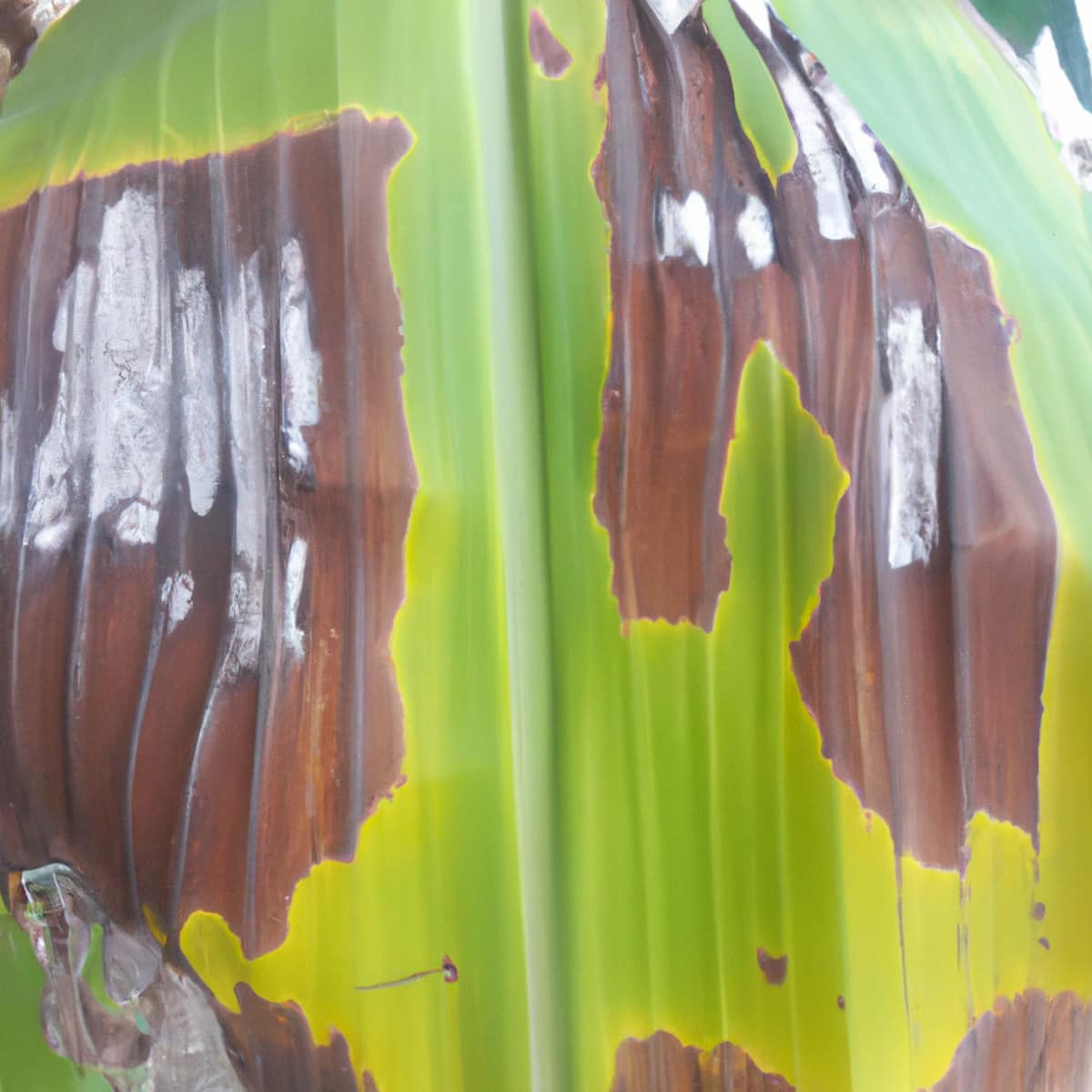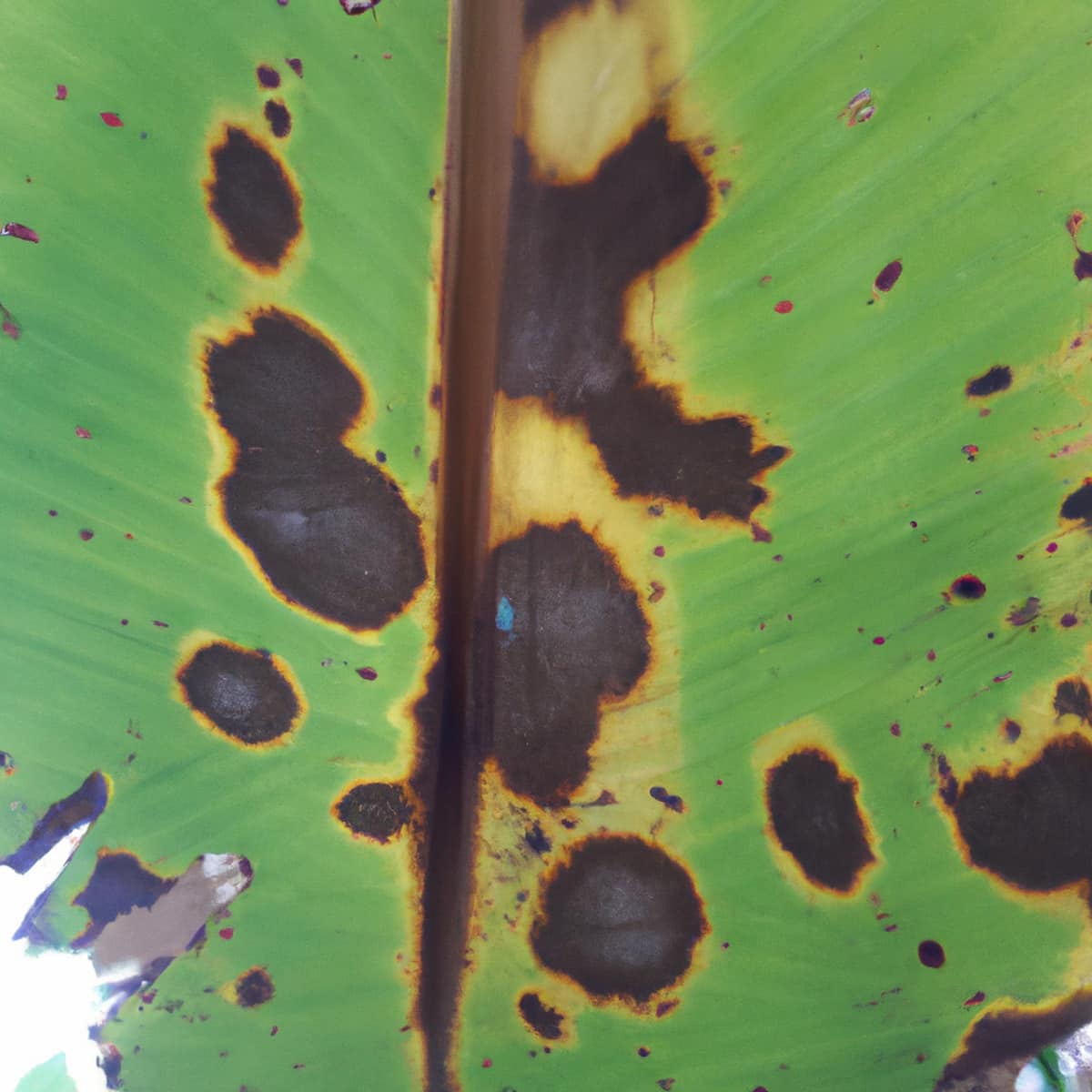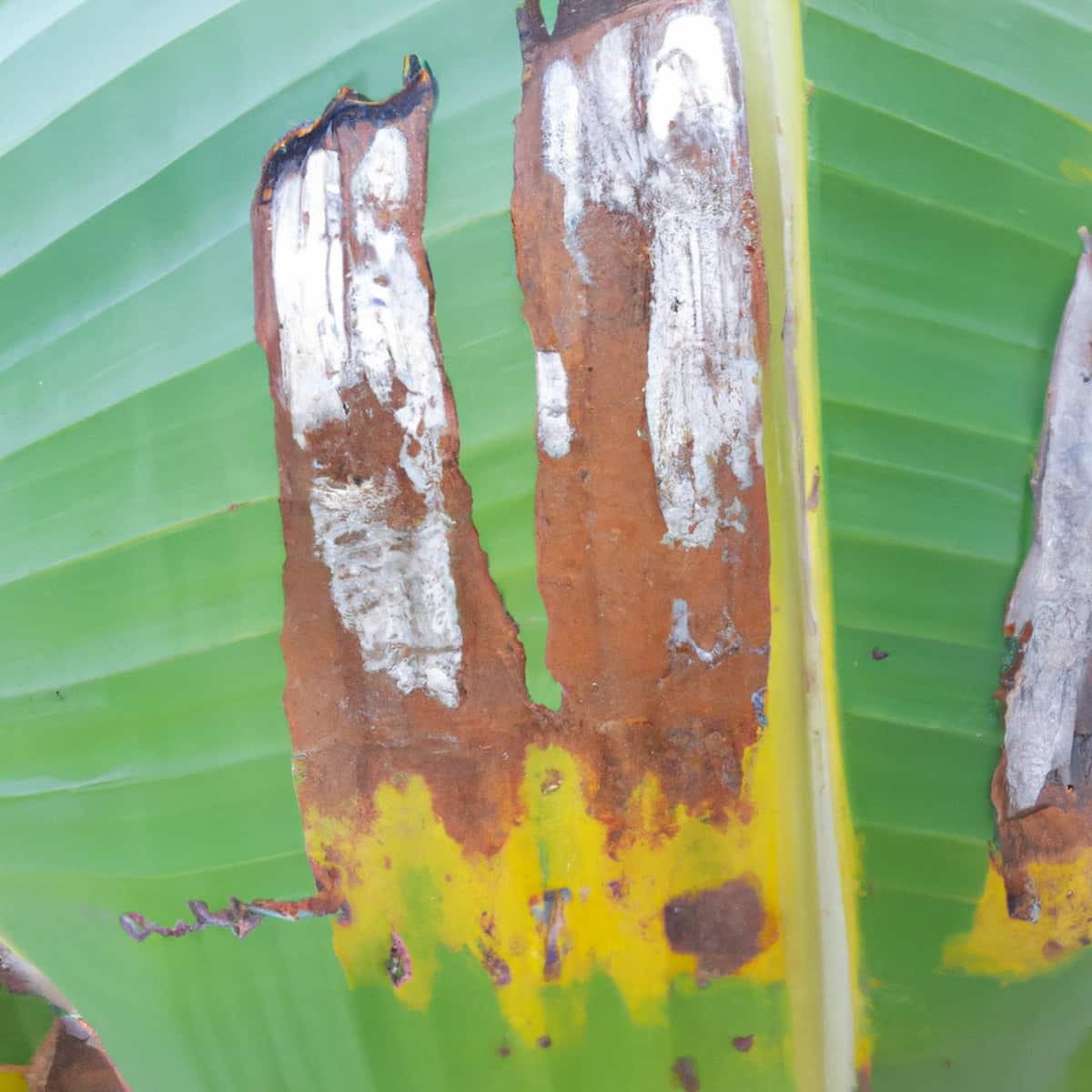The fungus causes the Banana Sigatoka Disease Mycospharella musicola is one of the most destructive diseases that affects banana crops worldwide. The economic impact of Banana Sigatoka Disease is significant, as it attacks the leaves and reduces photosynthesis, fruit yield, quality, and marketability and can result in the complete loss of yield. The disease was first reported in Central Africa in the 1960s and is also known as Mycospharella Leaf Spot, Leaf Streak, Yellow Sigatoka, or Black Sigatoka Disease.

Developing resistant banana varieties and implementing integrated pest management strategies are crucial in managing the disease. To effectively manage this disease, it is important to understand its disease cycle, the mode of disease spread, and the best methods for controlling it. This article will provide an overview and discussion of the Banana Sigatoka Disease in Banana crops, including its symptoms, identification techniques, and control.
Banana Sigatoka Disease Management
The Causal Organism of Banana Sigatoka Disease
- Mycospharella musicola is an obligate fungal pathogen that belongs to the Family Mycosphaerellaceae of Order Capnodiales of the Phylum Ascomycota. It is formerly known as Cercospora musae.
- The pathogen produces spores called conidia, dispersed by wind and water to other parts of the plant or other banana plants.
- The pathogen also produces ascospores.
The Disease Cycle of Banana Sigatoka Disease
- The disease cycle of the Banana Sigatoka Disease, Mycospharella musicola, in Banana Crops begins with the fungal spores penetrating the stomata or wounds in the leaves. Once inside, it colonizes the tissues and starts to grow and spread.
- The disease cycle of Banana Sigatoka Disease begins with the production of spores by the fungus. Conidia are produced and dispersed by wind, rain, and human activities, such as the movement of infected plant material. Ascospores are enclosed within fruiting bodies called pseudothecia. The pseudothecia are formed on dead infected leaves and are dispersed by rain and wind.
- When the spores come in contact with a susceptible banana plant, they germinate and penetrate the plant tissue. The fungus then colonizes the tissue and starts to grow and spread. The symptoms of Banana Sigatoka Disease appear after incubation, ranging from a few days to several weeks, depending on the environmental conditions.
- As the disease progresses, the infected leaves develop necrotic lesions, which coalesce and lead to defoliation. The loss of leaves reduces the plant’s photosynthetic capacity, leading to reduced yield and fruit quality. In severe cases, the disease can cause the death of the entire plant.
Occurrence of Banana Sigatoka Disease in Banana Crop
- Location of Banana Sigatoka disease: This disease occurs in Banana crops in India, Africa, China, Bangladesh, Sri Lanka, Vietnam, Thailand, Indonesia, Malaysia, the Philippines, the United States, Mexico, Brazil, Colombia, Ecuador, Peru, and Australia.
- Host range: The most common crops affected by Mycospharella musicola are Banana, Plantains, and other Wild banana species.
Favorable Conditions for Banana Sigatoka Disease Spread in the Field
- The disease can develop rapidly in warm temperatures, promoting the fungus’s growth and spread. And requires a moist environment for spore germination, penetration, and infection of banana leaves.
- The optimal temperature range for Mycospharella musicola growth is 20-28°C, and high humidity levels between 85-100% are ideal.
- Heavy rain can cause the fungal spores to spread quickly and infect new leaves, increasing the severity of the disease.
- The proximity of plants in dense plantations increases the likelihood of spore transfer from infected plants to healthy ones.
- Young banana plants are more susceptible to Banana Sigatoka Disease than mature plants.
- Nutrient deficiencies, especially potassium, can increase the susceptibility of banana plants to the disease. A lack of potassium can weaken the plant’s defense mechanism, making it more vulnerable to fungal infections.
In case you missed it: Banana Bract Mosaic Disease Management: Symptoms, Treatment, Chemical, Biological, and Organic Control

Damage Symptoms of Banana Sigatoka Disease
- The symptoms are caused by producing toxic metabolites like sigatokins that disrupt the chloroplasts and reduce photosynthesis. As a result, the leaves of infected plants become yellow and wilted, leading to reduced yield and fruit quality.
- The characteristic feature of this disease is the rapid drying and wilting of leaves.
- The symptoms include the appearance of small, dark brown spots on the leaves that gradually increase in size and merge to form larger necrotic lesions.
- As the disease progresses, the leaves become yellow and wilted, leading to reduced photosynthesis, yield, fruit quality, and, ultimately, the death of the entire plant.
Percentage of Yield Loss Due to Banana Sigatoka Disease in Banana Crop
- The disease can cause 10% yield losses in the United States. In Mexico, yield losses are 40%. In India, the yield losses are 50%. In Bangladesh, the losses are 50%. In Sri Lanka, the losses are 40%. In China, a 30% yield loss is seen. In Africa, yield losses are up to 50%.
- In Indonesia, it is 60%. In Vietnam, it is 70%. In Ecuador, it is 60%. In Peru, it is 30%. In the Philippines, it is 50%. In Malaysia, it is 40%. In Colombia, it is 50%. In Thailand, it is 50%. In Brazil, it is 30%. In Australia, the losses are 10%. The Economic Threshold Level is determined at 35-40% of affected leaves.
Cultural Control Measures of Banana Sigatoka Disease
- Avoid High-Density Planting techniques, as this can spread the disease rapidly.
- Provide proper drainage facilities in the soil and avoid waterlogging in the field.
- The field should be kept clean by removing and burning all infected leaves, suckers, and weeds.
- Prevent or reduce mechanical injuries and bruising during harvesting and transport.
- Disinfect tools and equipment and avoid soil movement from infested to disease-free fields.
- Proper fertilization can improve plant health and vigor, making them more disease-resistant.
Biological Control Measures of Banana Sigatoka Disease
- Predatory mites such as Phytoseiulus persimilis can feed on other mites that transmit Mycospharella musicola and reduce their population, thus reducing disease spread.
- Trichoderma harzianum are beneficial fungi that colonize the roots and soil, produce antibiotics that inhibit its growth, and induce plant defenses against it.
- Bacillus subtilis and Pseudomonas fluorescens are beneficial bacteria that colonize the banana plant’s roots and produce antibiotics that suppress the growth and activity of the pathogen.
- Mycoviruses and Beauveria bassiana can parasitize and kill the pathogen.
Chemical Control Measures of Banana Sigatoka Disease
- Spray Mancozeb, Dithane, Thiophanate Methyl, Tebuconazole, Propiconazole, Chlorothalonil, or Carbendazim at 15 days intervals from the appearance of the disease to control the fungus spread.
- Wetting agents – Use wetting agents like Teepol or Sandovit with any of the above chemicals to stick them onto the leaves.
Organic Control Measures of Banana Sigatoka Disease
- Spray Copper-based fungicides, such as copper sulfate, copper oxychloride, and copper hydroxide. They can be applied as a preventive or curative measure after disease onset.
- Plant extracts from neem, ginger, garlic, and turmeric leaves, such as powders, oils, and cakes, are used as a preventive measure to control the disease.
- Essential oils like tea tree, thyme, oregano, clove, and cinnamon can also control the disease.
Preventive Measures for Control of Banana Sigatoka Disease
- Avoid Close Planting and provide proper spacing to prevent the rapid spread of the disease.
- Use disease-free, healthy, and certified planting material only.
- Always use sterilized and disinfected pruning equipment to prevent the spread of the disease to new trees.
- Regularly monitoring the crops for signs of disease will help to find and manage the disease early before it spreads.
- Proper irrigation management, such as drip irrigation and avoiding waterlogging, can help reduce the risk of this pathogen in banana crops.
In case you missed it: Banana Panama Wilt Disease Management: Symptoms, Treatment, Chemical, Biological, and Organic Control

Conclusion
The Banana Sigatoka Disease caused by Mycospharella musicola is a significant threat to banana production globally. It can lead to substantial yield losses and impact the economic well-being of banana farmers. Integrated disease management, which combines different control measures, can reduce the reliance on fungicides and minimize their negative environmental impact.
- Deworming Schedule for Dogs/Puppies: A Beginners Guide
- How to Prevent and Control Parasites in Goats
- Beneficial Insects in Pest Management
- Natural Solutions for Pest Control in Flower Gardens
- Types of Fungicides Used in Agriculture
- Common Issues in the Fruit Development Stage of Pomegranate Farming
- Fruit Development Issues in Papaya: Easy Solutions and Treatment
- Soil-Borne Diseases and How to Protect Your Plants
- Practices to Prevent Disease Spread in the Garden